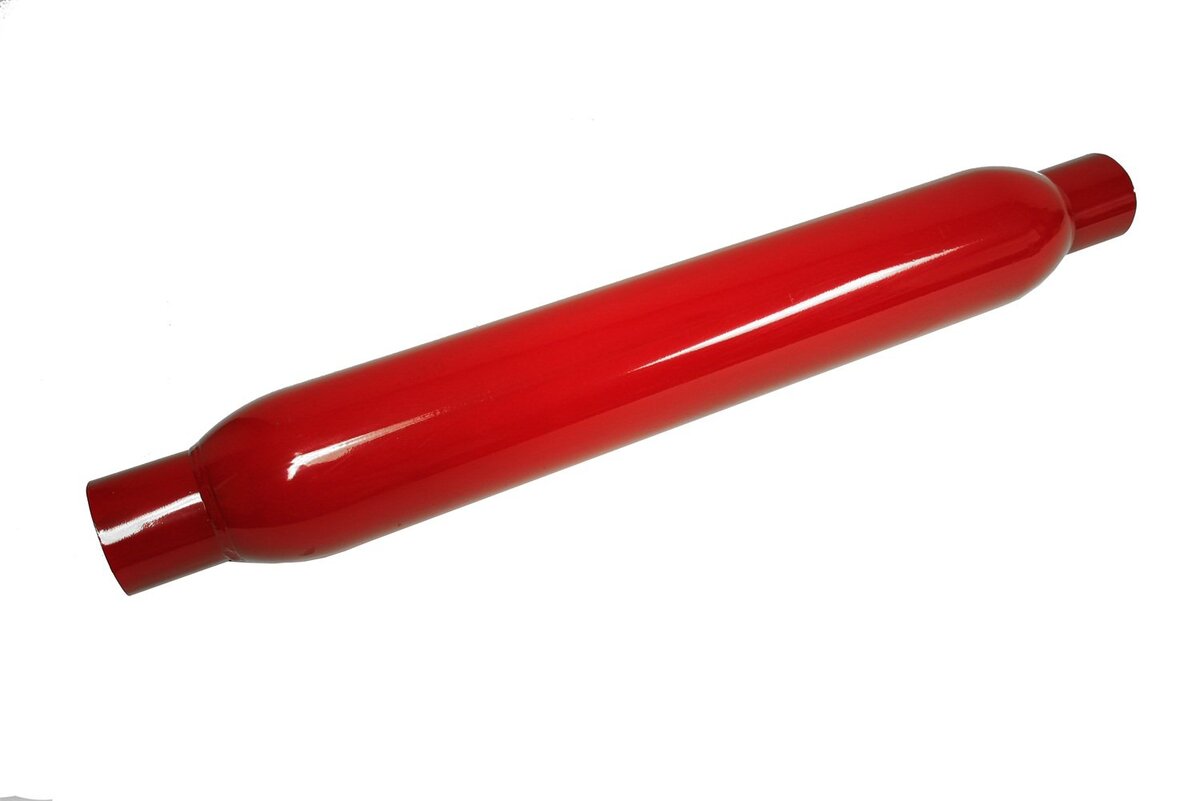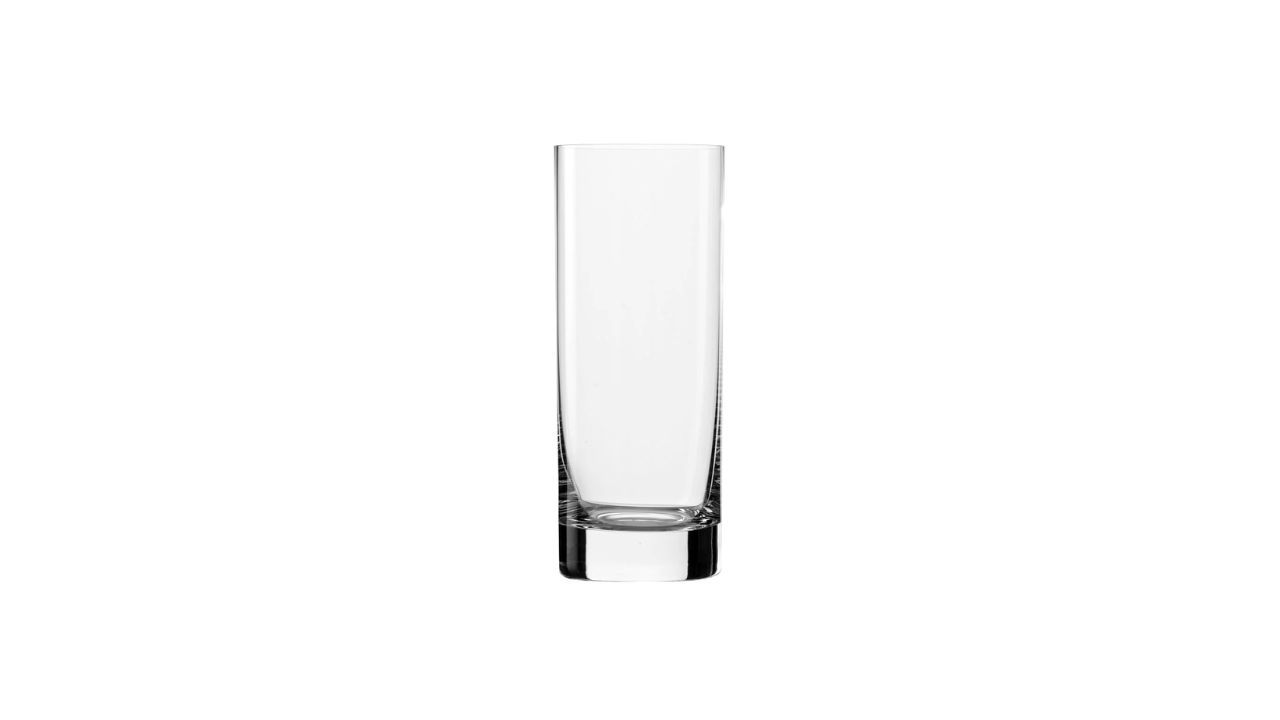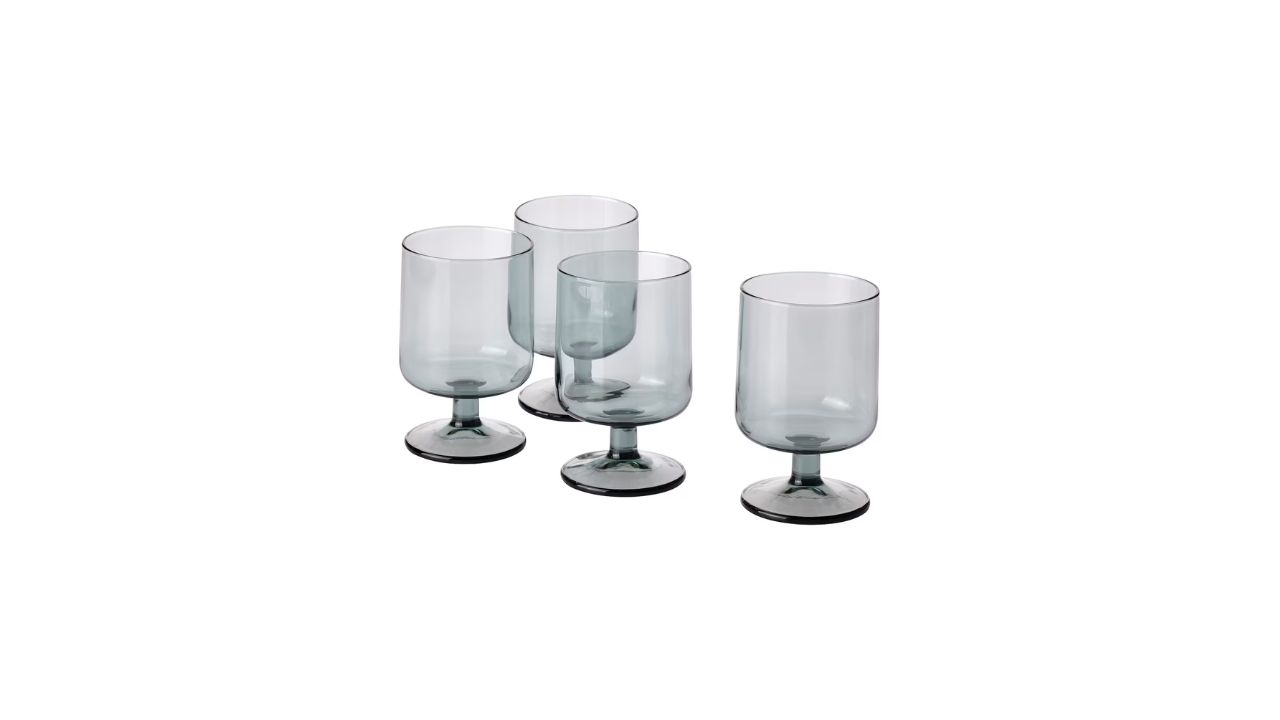Home>Furniture & Design>Interior Design Trends>What Is The Refractive Index Of Glass


Interior Design Trends
What Is The Refractive Index Of Glass
Modified: February 8, 2024
Discover the latest interior design trends and learn about the refractive index of glass. Stay updated with the latest in interior design and glass technology.
(Many of the links in this article redirect to a specific reviewed product. Your purchase of these products through affiliate links helps to generate commission for Storables.com, at no extra cost. Learn more)
Introduction
The refractive index of glass is a fundamental property that influences the behavior of light as it passes through this ubiquitous material. Understanding the concept of refractive index and its significance in the context of glass is crucial for comprehending various optical phenomena and practical applications in diverse fields.
The refractive index of glass is a measure of how much light slows down when it enters the material. This property plays a pivotal role in determining the behavior of light as it interacts with glass surfaces, impacting phenomena such as reflection, refraction, and dispersion. The refractive index is a key factor in the design and functionality of optical devices, including lenses, prisms, and fiber optics, as well as in the production of glass-based products across industries.
Exploring the refractive index of glass unveils the intricate interplay between light and matter, shedding light on the fascinating principles that govern the behavior of electromagnetic waves within a transparent medium. As we delve into the definition, importance, measurement, and applications of the refractive index in glass, we embark on a journey to unravel the captivating role of this property in shaping the way we perceive and harness light.
Understanding the refractive index of glass is not only a scientific pursuit but also a gateway to unlocking the potential of this material in various technological and artistic endeavors. By delving into the intricacies of this property, we gain insights into the inner workings of optical systems, the artistry of glassmaking, and the innovative applications that leverage the unique properties of glass.
The exploration of the refractive index of glass is a voyage into the realm of optics, materials science, and engineering, where the convergence of physics and creativity gives rise to a myriad of possibilities. As we embark on this exploration, we uncover the profound impact of the refractive index on the way we perceive, manipulate, and harness light, transcending the boundaries of scientific inquiry to illuminate the path toward innovation and discovery.
Key Takeaways:
- The refractive index of glass determines how light behaves inside it, influencing everything from lenses and prisms to fiber optics and artistic glasswork. It’s like a secret code that unlocks the potential of light and glass!
- Factors like composition, density, and temperature affect the refractive index of glass, shaping its optical properties. It’s like a magical recipe that determines how glass interacts with light and the world around us!
Definition of Refractive Index
The refractive index of a material, including glass, is a fundamental optical property that quantifies how much light slows down when it enters the material. It is defined as the ratio of the speed of light in a vacuum to the speed of light in the material. This ratio provides a measure of how much the direction of light is altered as it passes from one medium to another, such as from air to glass.
In the context of glass, the refractive index determines the degree to which light is bent or refracted as it enters and traverses the material. This phenomenon is a result of the change in the speed of light as it transitions from air to glass, causing the light rays to change direction. The refractive index is denoted by the symbol "n" and is a dimensionless quantity, with higher values indicating a greater degree of light bending.
The refractive index of glass is a crucial parameter in the design and functionality of optical components, as it influences the focusing, dispersion, and transmission of light. It also plays a pivotal role in phenomena such as total internal reflection, where light is completely reflected within the glass due to the refractive index differential between the glass and the surrounding medium.
Understanding the refractive index of glass is essential for various applications, including the design of lenses, prisms, and optical fibers, as well as in the production of glass-based products with specific optical properties. By quantifying the behavior of light in glass, the refractive index serves as a cornerstone for the development of optical systems and materials with tailored light-manipulating capabilities.
In essence, the refractive index of glass encapsulates the material's ability to influence the propagation of light, shaping the way we perceive and utilize this versatile medium in a myriad of optical and technological contexts.
Importance of Refractive Index in Glass
The refractive index of glass holds immense significance in various scientific, industrial, and artistic domains, exerting a profound influence on the behavior of light as it interacts with this versatile material. Understanding the importance of the refractive index in glass unveils its pivotal role in shaping optical phenomena and enabling the development of innovative technologies and products.
One of the primary reasons why the refractive index of glass is crucial lies in its impact on the design and functionality of optical components. The ability of glass to bend and focus light is intricately linked to its refractive index, which determines the degree of light bending as it enters and traverses the material. This property is fundamental in the production of lenses, prisms, and optical fibers, where precise control over the behavior of light is essential for achieving desired optical effects.
Moreover, the refractive index of glass plays a vital role in the field of fiber optics, where the transmission of light signals through glass fibers is harnessed for telecommunications, internet connectivity, and medical imaging. The ability to tailor the refractive index of glass fibers enables the efficient and reliable transmission of light signals over long distances, underpinning the backbone of modern communication networks and diagnostic technologies.
In addition, the refractive index of glass is of paramount importance in the production of specialty glass with tailored optical properties. By manipulating the refractive index, glass manufacturers can create materials with specific light-manipulating capabilities, such as anti-reflective coatings, optical filters, and light-guiding elements. These advancements have far-reaching implications across industries, including photography, display technologies, and architectural glass applications.
Furthermore, the refractive index of glass is integral to the art and science of glassmaking, where the interplay of light and color is harnessed to create captivating glass artworks and architectural installations. By understanding and leveraging the refractive index, glass artists and designers can manipulate light to achieve stunning visual effects, adding depth, brilliance, and character to their creations.
In essence, the importance of the refractive index in glass transcends scientific and industrial realms, permeating into the realms of art, design, and innovation. By harnessing the unique optical properties conferred by the refractive index, glass continues to inspire breakthroughs in optical technologies, artistic expressions, and functional applications, underscoring its enduring relevance in a world shaped by the interplay of light and material.
Factors Affecting the Refractive Index of Glass
The refractive index of glass is influenced by a myriad of factors that collectively shape its optical properties and behavior. Understanding these factors is essential for gaining insights into the intricate interplay between light and glass, as well as for tailoring the refractive index to meet specific technological and artistic requirements.
1. Composition:
The chemical composition of glass is a primary determinant of its refractive index. Different types of glass, such as borosilicate, flint, and crown glass, exhibit varying refractive indices due to the distinct arrangement of atoms and molecules within the material. The presence of elements such as lead, barium, and titanium can significantly impact the refractive index, leading to the creation of glasses with diverse optical characteristics.
Read more: What Is A Crystal Glass?
2. Density:
The density of glass, which is influenced by its composition and manufacturing process, plays a crucial role in determining its refractive index. Higher-density glasses tend to have higher refractive indices due to the increased interaction of light with the densely packed atoms and molecules. This relationship between density and refractive index underscores the importance of material properties in shaping the behavior of light within glass.
3. Temperature and Pressure:
The refractive index of glass is sensitive to changes in temperature and pressure. Variations in these environmental factors can alter the density and molecular arrangement of glass, consequently affecting its refractive index. This phenomenon is particularly relevant in applications where glass is exposed to extreme conditions, such as in optical instruments, high-temperature environments, or under high-pressure conditions.
4. Wavelength of Light:
The refractive index of glass exhibits wavelength dependence, meaning that it can vary with the color or wavelength of light passing through it. This phenomenon, known as dispersion, results in the separation of light into its constituent colors when it traverses the glass. The refractive index of glass is typically higher for shorter wavelengths, leading to the characteristic spectral dispersion observed in prisms and other optical elements.
5. Annealing and Polishing:
The manufacturing processes of glass, including annealing and polishing, can influence its refractive index. Annealing, which involves controlled cooling to relieve internal stresses, can impact the molecular structure and, consequently, the refractive index of glass. Similarly, the surface quality achieved through polishing can affect the interaction of light with the glass, influencing its overall refractive properties.
In essence, the refractive index of glass is a complex interplay of material composition, physical properties, environmental conditions, and manufacturing processes. By comprehensively understanding the factors that influence the refractive index, scientists, engineers, and artists can harness the unique optical characteristics of glass to innovate and create across a diverse spectrum of applications.
Read more: What Is Lead Glass
Measurement of Refractive Index in Glass
The measurement of the refractive index in glass is a critical process that enables the precise characterization of this fundamental optical property. By quantifying the refractive index, scientists, engineers, and glass artisans gain valuable insights into the behavior of light within the material, laying the foundation for the development of advanced optical systems, innovative materials, and captivating glass artworks.
One of the primary methods for measuring the refractive index of glass is through the use of a refractometer. This instrument leverages the principle of total internal reflection to determine the refractive index by measuring the critical angle at which light is completely internally reflected within a glass sample. By analyzing the angle of total internal reflection, the refractometer provides a direct and accurate assessment of the refractive index, enabling precise characterization of the optical properties of the glass.
Another widely employed technique for measuring the refractive index of glass involves the use of spectrometry. By analyzing the behavior of light as it passes through the glass sample and undergoes spectral dispersion, spectrometers can determine the refractive index across different wavelengths. This spectral analysis yields valuable information about the wavelength dependence of the refractive index, shedding light on the material's dispersion characteristics and its suitability for diverse optical applications.
In addition to these methods, ellipsometry and interferometry techniques offer advanced means of measuring the refractive index in glass with exceptional precision. Ellipsometry relies on the analysis of polarized light reflected from the glass surface to extract detailed information about the refractive index and thin film properties. Interferometry, on the other hand, exploits the interference patterns generated by light passing through the glass to deduce the refractive index with high accuracy, making it a valuable tool for research and industrial applications.
Furthermore, advancements in technology have led to the development of non-destructive and non-contact methods for measuring the refractive index of glass, such as optical coherence tomography and confocal microscopy. These techniques enable three-dimensional mapping of the refractive index distribution within glass samples, offering unprecedented insights into the spatial variations of this critical optical property.
By employing these diverse measurement techniques, researchers and practitioners can gain a comprehensive understanding of the refractive index in glass, paving the way for innovations in optical design, material engineering, and artistic glasswork. The ability to accurately measure and characterize the refractive index empowers individuals across disciplines to harness the unique optical properties of glass, driving progress and creativity in the realms of science, technology, and art.
Applications of Refractive Index in Glass
The refractive index of glass finds diverse and impactful applications across a wide spectrum of industries and disciplines, leveraging the material's unique optical properties to drive innovation and functionality. Understanding and harnessing the refractive index in glass has led to breakthroughs in optical technologies, artistic expressions, and practical applications, shaping the way we perceive, manipulate, and utilize light.
1. Optical Systems and Devices:
The precise control of the refractive index in glass is paramount in the design and manufacturing of optical systems and devices. Lenses, prisms, and optical filters rely on the refractive properties of glass to focus, disperse, and manipulate light, forming the backbone of imaging systems, telescopes, microscopes, and cameras. By tailoring the refractive index, optical engineers can optimize the performance of these devices, enhancing image quality, resolution, and light-gathering capabilities.
2. Fiber Optics and Telecommunications:
The refractive index of glass plays a pivotal role in the field of fiber optics, where glass fibers are utilized for the transmission of light signals in telecommunications and data networks. By precisely controlling the refractive index of the glass fibers, engineers can ensure efficient signal transmission over long distances, enabling high-speed internet connectivity, telephony, and data transfer. The ability to manipulate the refractive index has revolutionized the telecommunications industry, underpinning the global connectivity infrastructure.
Read more: What Is Amber Glass
3. Architectural and Decorative Glass:
In architectural and decorative applications, the refractive index of glass is harnessed to create visually stunning and functional elements. From anti-reflective coatings and energy-efficient glazing to artistic glass installations, the tailored refractive properties of glass enable the realization of aesthetically pleasing, light-manipulating structures. By leveraging the refractive index, architects and designers can achieve desired lighting effects, visual transparency, and energy performance in buildings and interior spaces.
4. Artistic Glasswork and Sculptures:
Glass artists and sculptors utilize the refractive index to imbue their creations with captivating optical effects. By understanding how light interacts with glass, artists can manipulate the refractive properties to achieve stunning visual effects, including color dispersion, light refraction, and internal reflections. The refractive index serves as a tool for artistic expression, allowing creators to craft mesmerizing glass artworks that play with the interplay of light and material, captivating viewers with their brilliance and depth.
5. Optical Coatings and Thin Films:
The ability to engineer the refractive index of glass coatings and thin films has led to advancements in optical coatings for lenses, mirrors, and electronic displays. By precisely controlling the refractive properties, manufacturers can develop anti-reflective coatings, optical filters, and light-guiding films that enhance the performance and durability of optical components. These coatings leverage the refractive index to minimize light loss, reduce glare, and improve the overall optical efficiency of diverse devices and surfaces.
In essence, the applications of the refractive index in glass extend across scientific, technological, and artistic domains, driving progress and creativity in fields as diverse as optics, telecommunications, architecture, and visual arts. By harnessing the unique optical properties conferred by the refractive index, glass continues to inspire innovations that shape our interactions with light, enrich our built environment, and elevate artistic expressions, underscoring its enduring relevance in a world illuminated by the interplay of light and material.
Conclusion
In conclusion, the refractive index of glass stands as a cornerstone of optical science, material engineering, and artistic expression, encapsulating the profound interplay between light and this versatile medium. The exploration of the refractive index in glass unveils its pivotal role in shaping optical phenomena, enabling technological advancements, and inspiring captivating artistic creations. From the precise measurement of refractive properties to the diverse applications across industries, the significance of the refractive index in glass reverberates across scientific, industrial, and creative domains.
The understanding of the refractive index in glass empowers researchers, engineers, and artists to unlock the full potential of this material, driving innovations in optical systems, telecommunications, architectural design, and visual arts. By comprehensively characterizing and manipulating the refractive properties of glass, individuals across disciplines continue to push the boundaries of what is possible, harnessing the unique optical characteristics of glass to create, communicate, and innovate.
As we navigate the intricate realm of the refractive index in glass, we unveil the enduring relevance of this fundamental property in shaping the way we perceive, manipulate, and harness light. The refractive index serves as a guiding light, illuminating the path toward advancements in optical technologies, sustainable architectural solutions, and captivating artistic expressions. By delving into the complexities of the refractive index in glass, we embark on a journey of discovery, where the convergence of science, technology, and art converges to redefine the boundaries of what is achievable with this remarkable material.
In essence, the refractive index of glass transcends its numerical value, embodying the essence of light and material interaction, and serving as a testament to human ingenuity and creativity. As we continue to unravel the mysteries and potentials of the refractive index in glass, we pave the way for a future illuminated by the transformative power of this fundamental optical property, where innovation and inspiration converge to shape a world where light and glass intertwine in captivating harmony.
Frequently Asked Questions about What Is The Refractive Index Of Glass
Was this page helpful?
At Storables.com, we guarantee accurate and reliable information. Our content, validated by Expert Board Contributors, is crafted following stringent Editorial Policies. We're committed to providing you with well-researched, expert-backed insights for all your informational needs.













0 thoughts on “What Is The Refractive Index Of Glass”